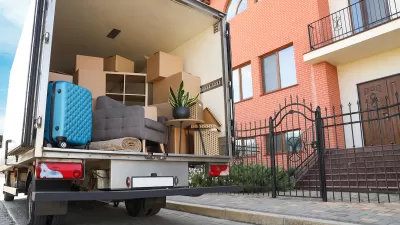Cities like St. Louis, where the 44,000 native-born Americans that left in the last decade have been replaced by 31,000 immigrants, offer a case study for why comprehensive immigration reform has a good chance of passing in divided Washington.
"Although there are still many hurdles to be overcome – not least the question of whether the undocumented immigrants should be given a pathway to earning citizenship – analysts say the prospects are the best in years, driven by rapidly changing demographics that have seen Hispanics become the largest voting bloc," she explains.
"While much of the attention has been on states that border Mexico and have large illegal populations, the broken immigration system is hurting states as far north as the Canadian border because of their declining populace."
“'Midwest leaders want to ensure sustainable growth, jobs, population stability, and quality of life,' the Chicago Council on Global Affairs, a think-tank, wrote in its report, entitled US Economic Competitiveness at Risk: A Midwest Call to Action on Immigration Reform. 'Immigrants are an essential ingredient for this future. America’s heartland can wait no longer,' it said."
FULL STORY: US industrial heartland weighs up immigration reforms

Maui's Vacation Rental Debate Turns Ugly
Verbal attacks, misinformation campaigns and fistfights plague a high-stakes debate to convert thousands of vacation rentals into long-term housing.

Planetizen Federal Action Tracker
A weekly monitor of how Trump’s orders and actions are impacting planners and planning in America.

In Urban Planning, AI Prompting Could be the New Design Thinking
Creativity has long been key to great urban design. What if we see AI as our new creative partner?

King County Supportive Housing Program Offers Hope for Unhoused Residents
The county is taking a ‘Housing First’ approach that prioritizes getting people into housing, then offering wraparound supportive services.

Researchers Use AI to Get Clearer Picture of US Housing
Analysts are using artificial intelligence to supercharge their research by allowing them to comb through data faster. Though these AI tools can be error prone, they save time and housing researchers are optimistic about the future.

Making Shared Micromobility More Inclusive
Cities and shared mobility system operators can do more to include people with disabilities in planning and operations, per a new report.
Urban Design for Planners 1: Software Tools
This six-course series explores essential urban design concepts using open source software and equips planners with the tools they need to participate fully in the urban design process.
Planning for Universal Design
Learn the tools for implementing Universal Design in planning regulations.
planning NEXT
Appalachian Highlands Housing Partners
Mpact (founded as Rail~Volution)
City of Camden Redevelopment Agency
City of Astoria
City of Portland
City of Laramie





























